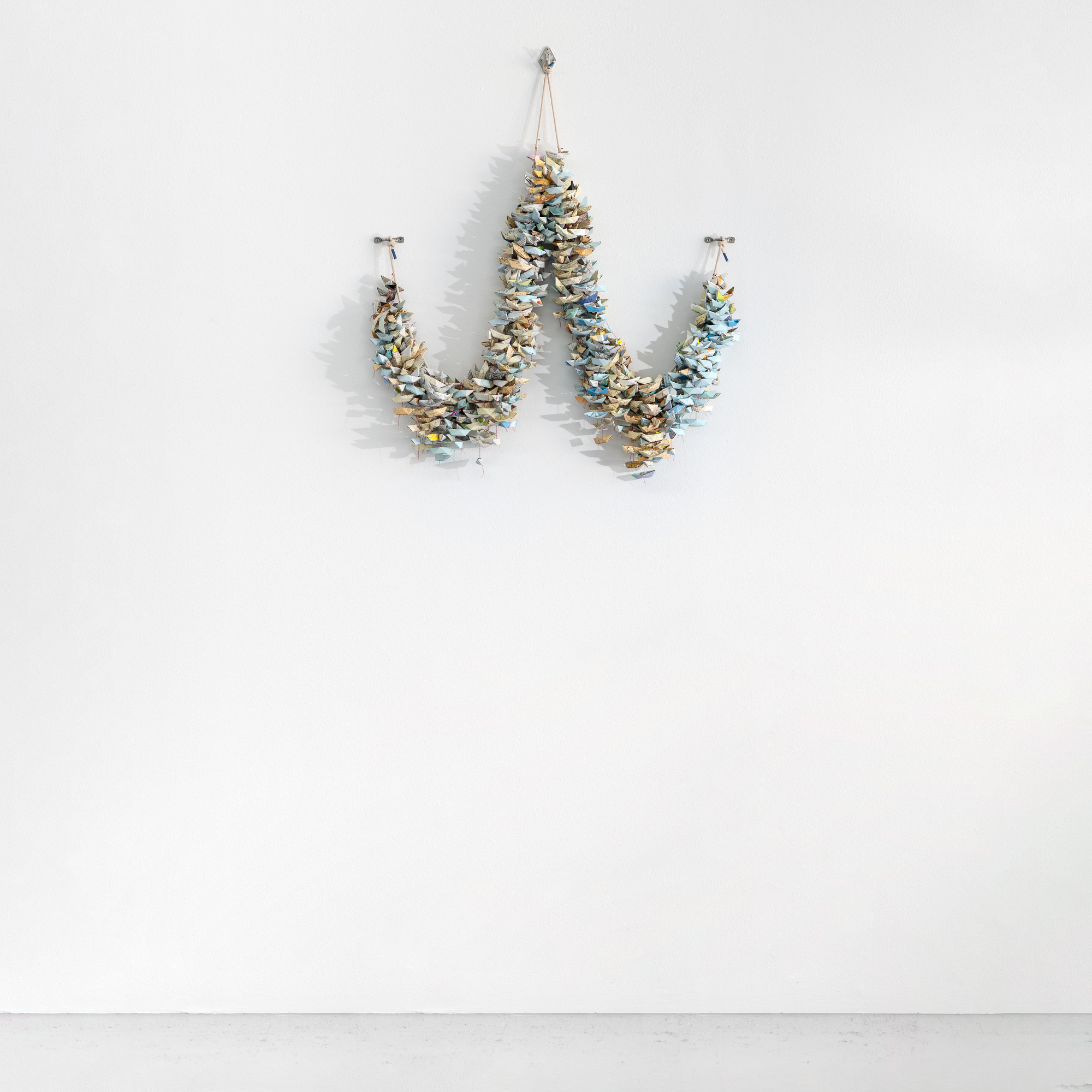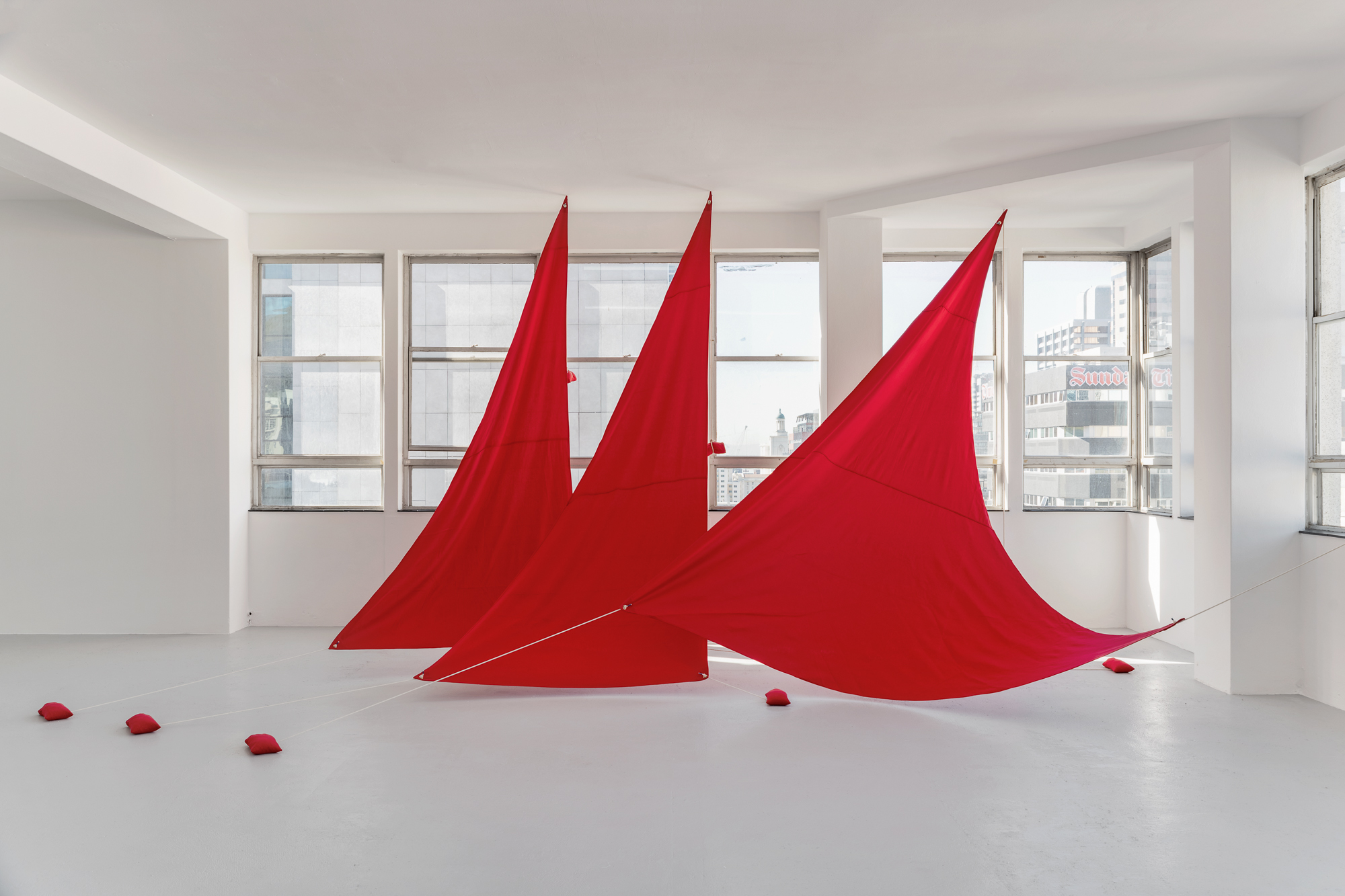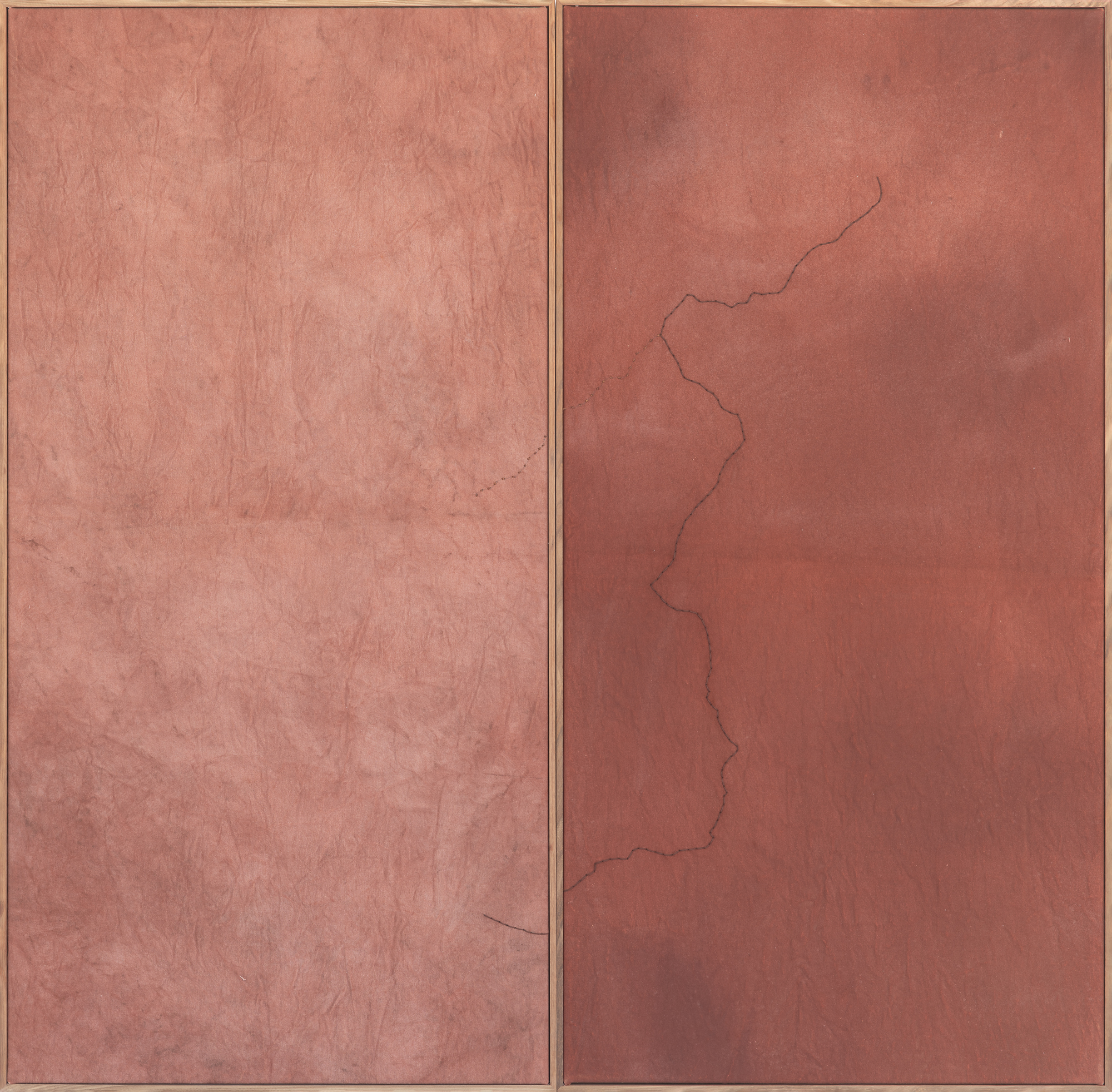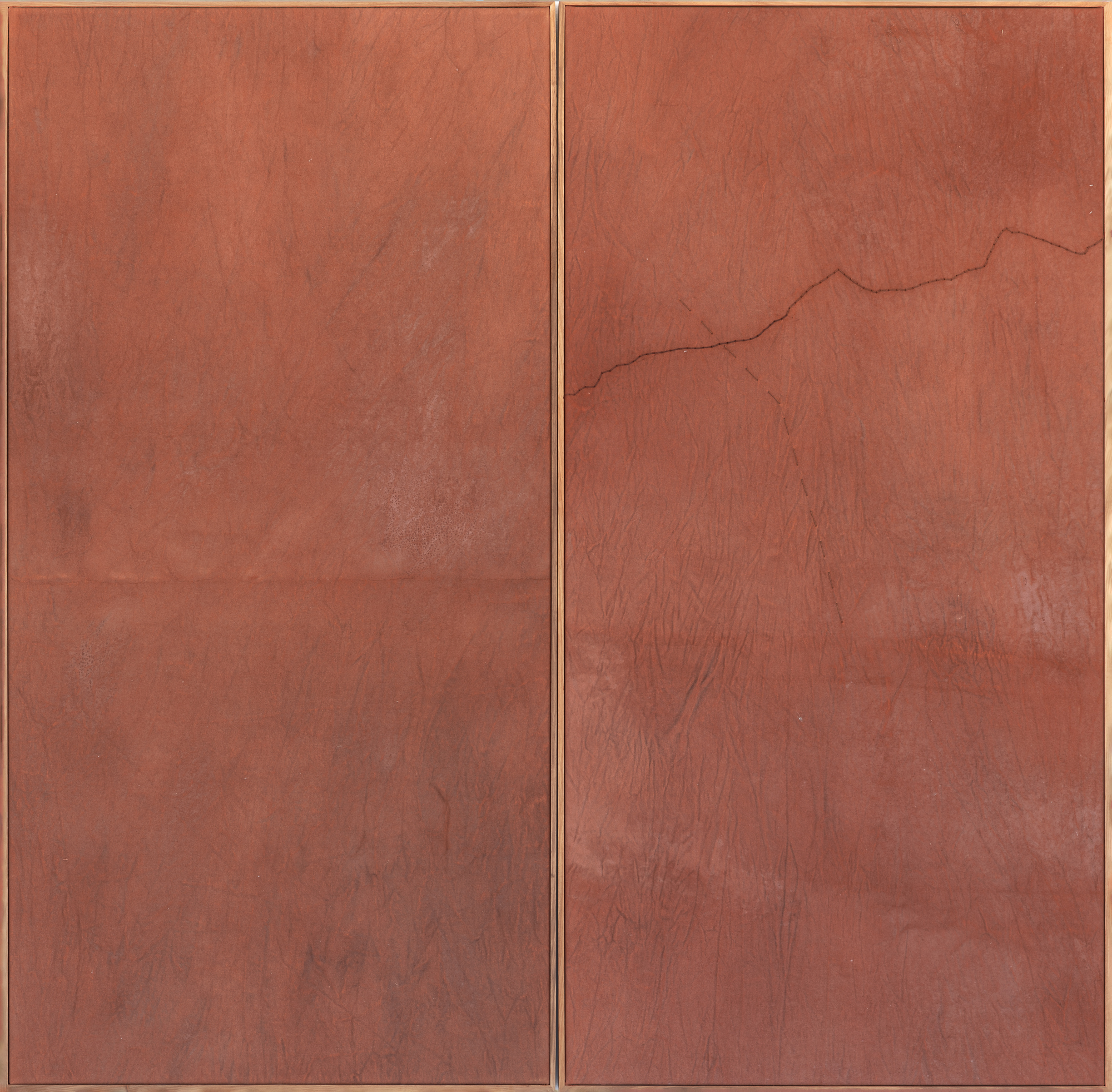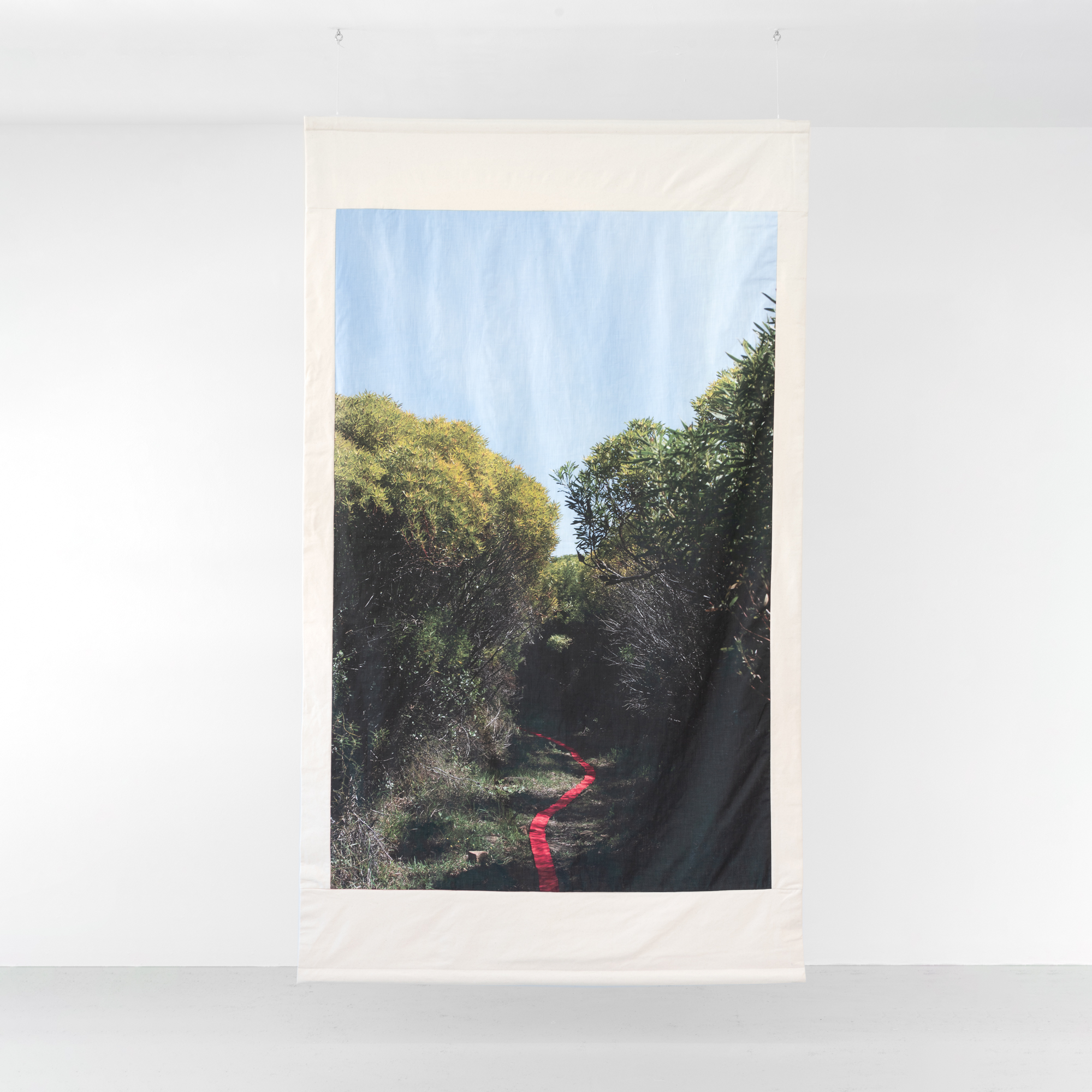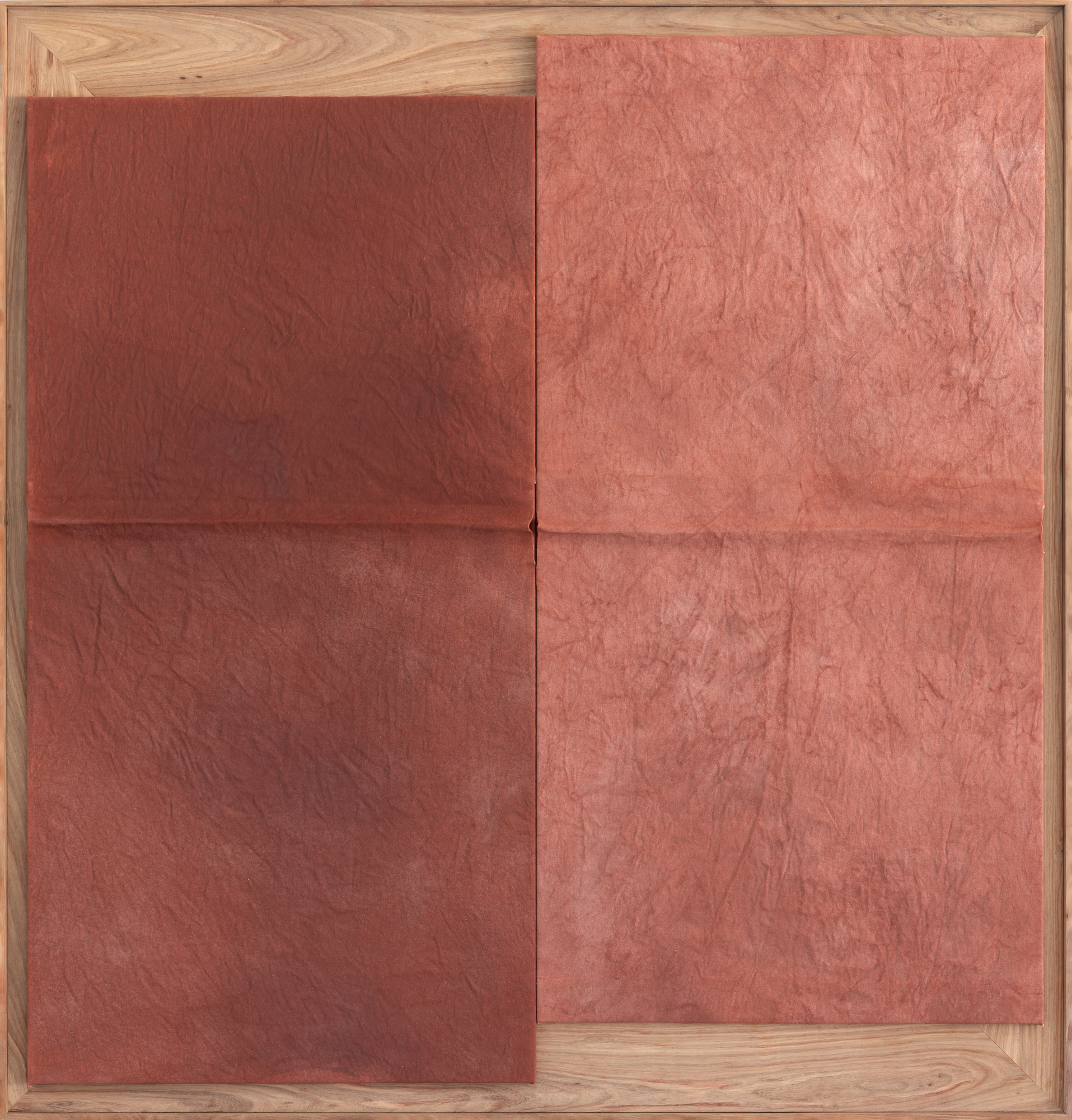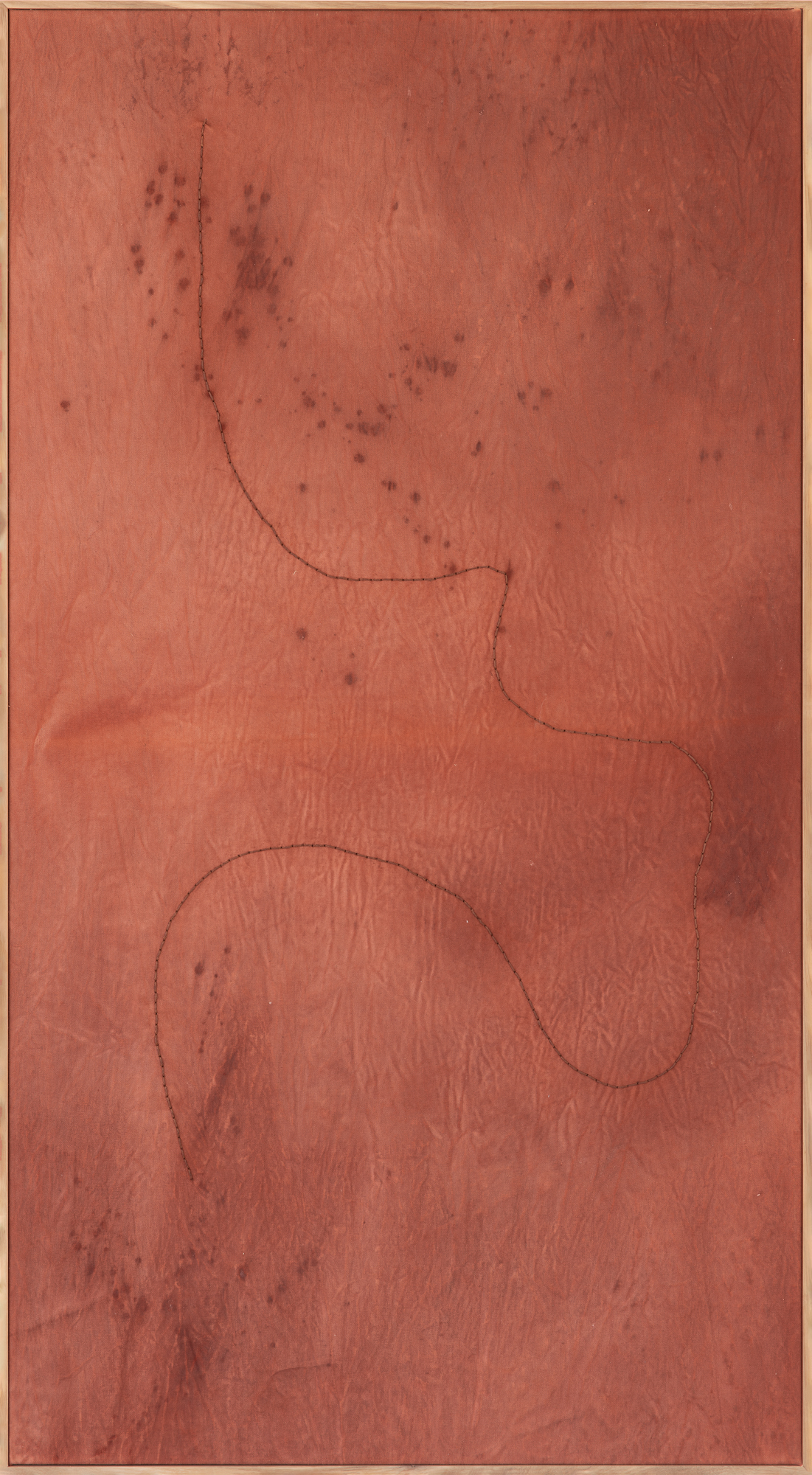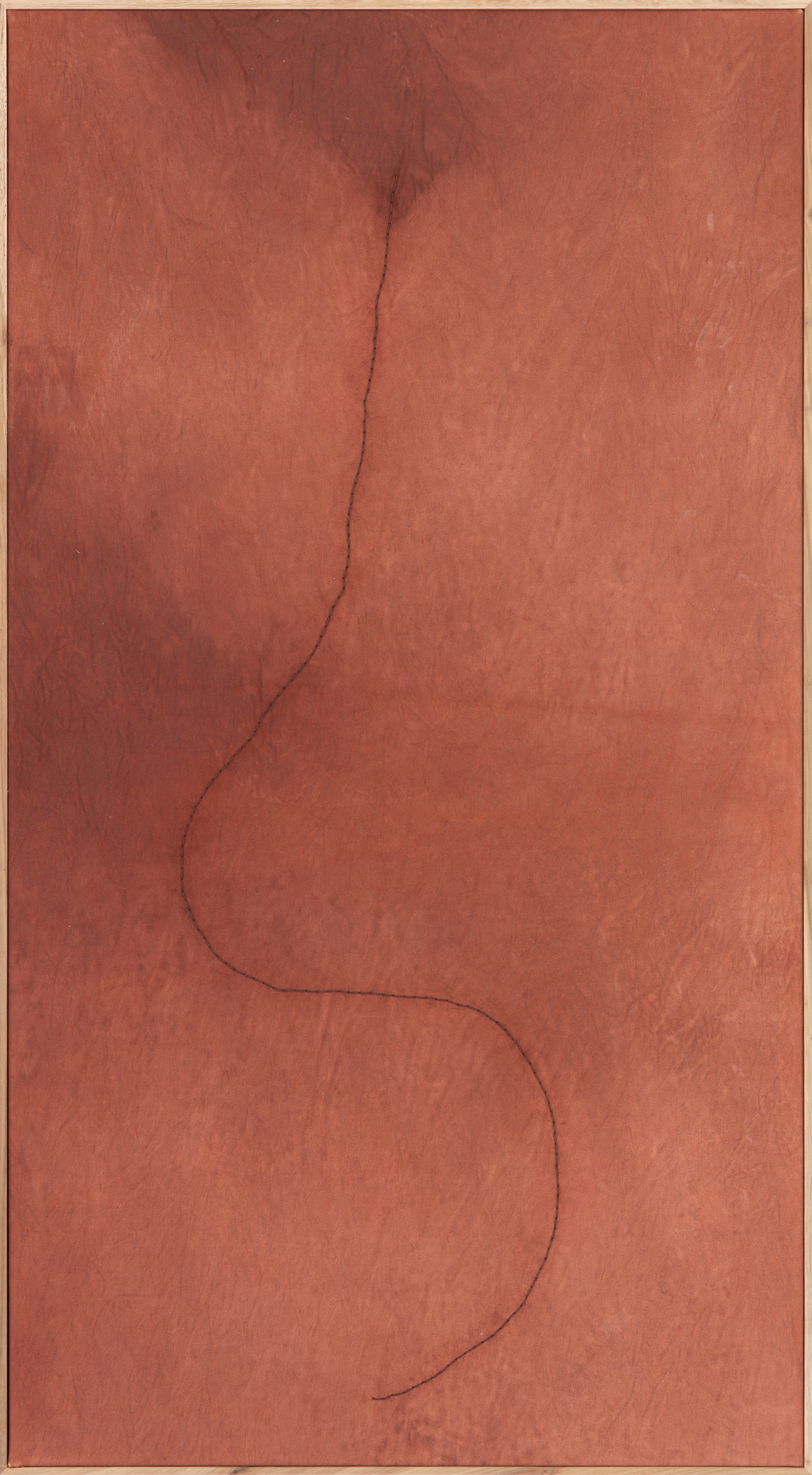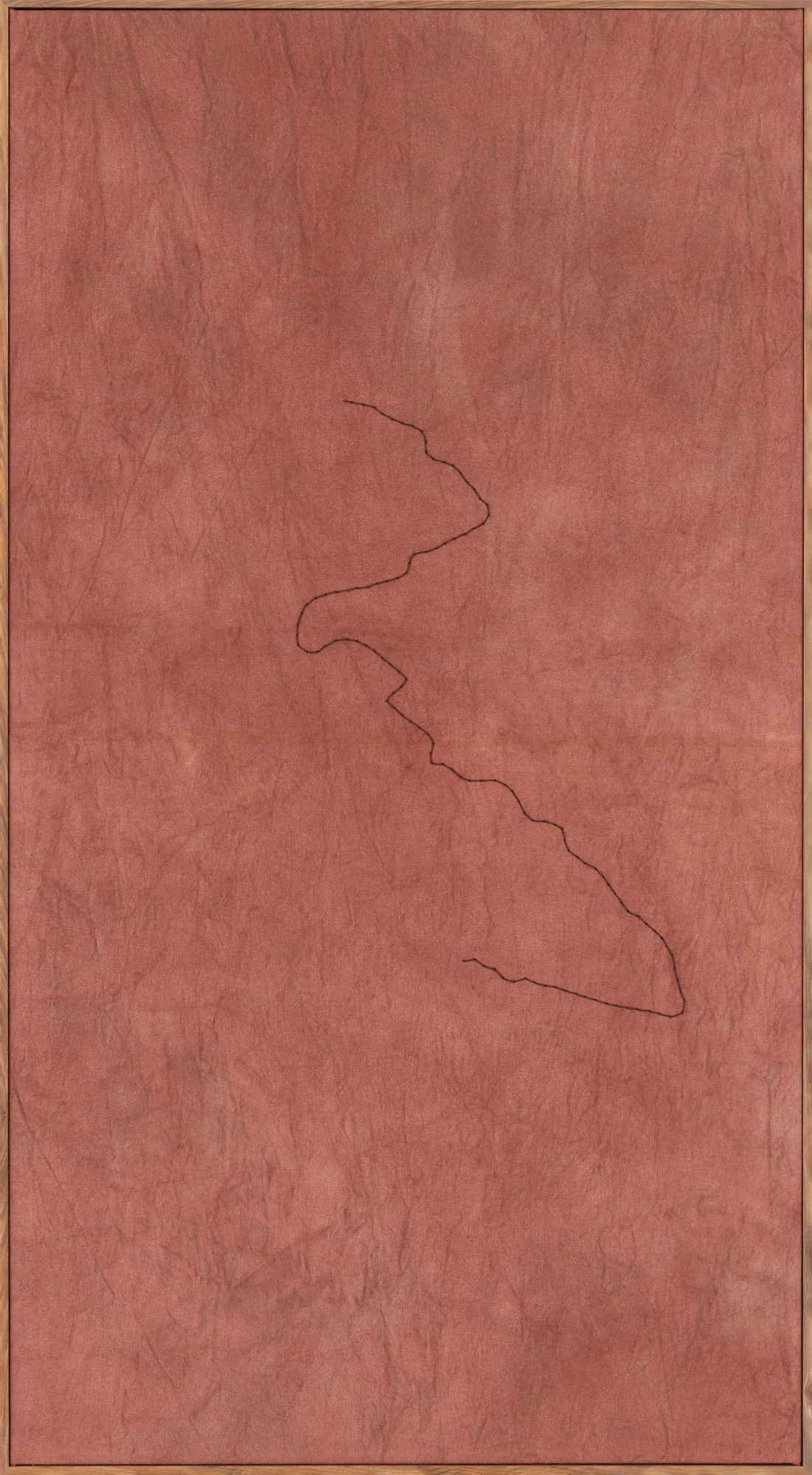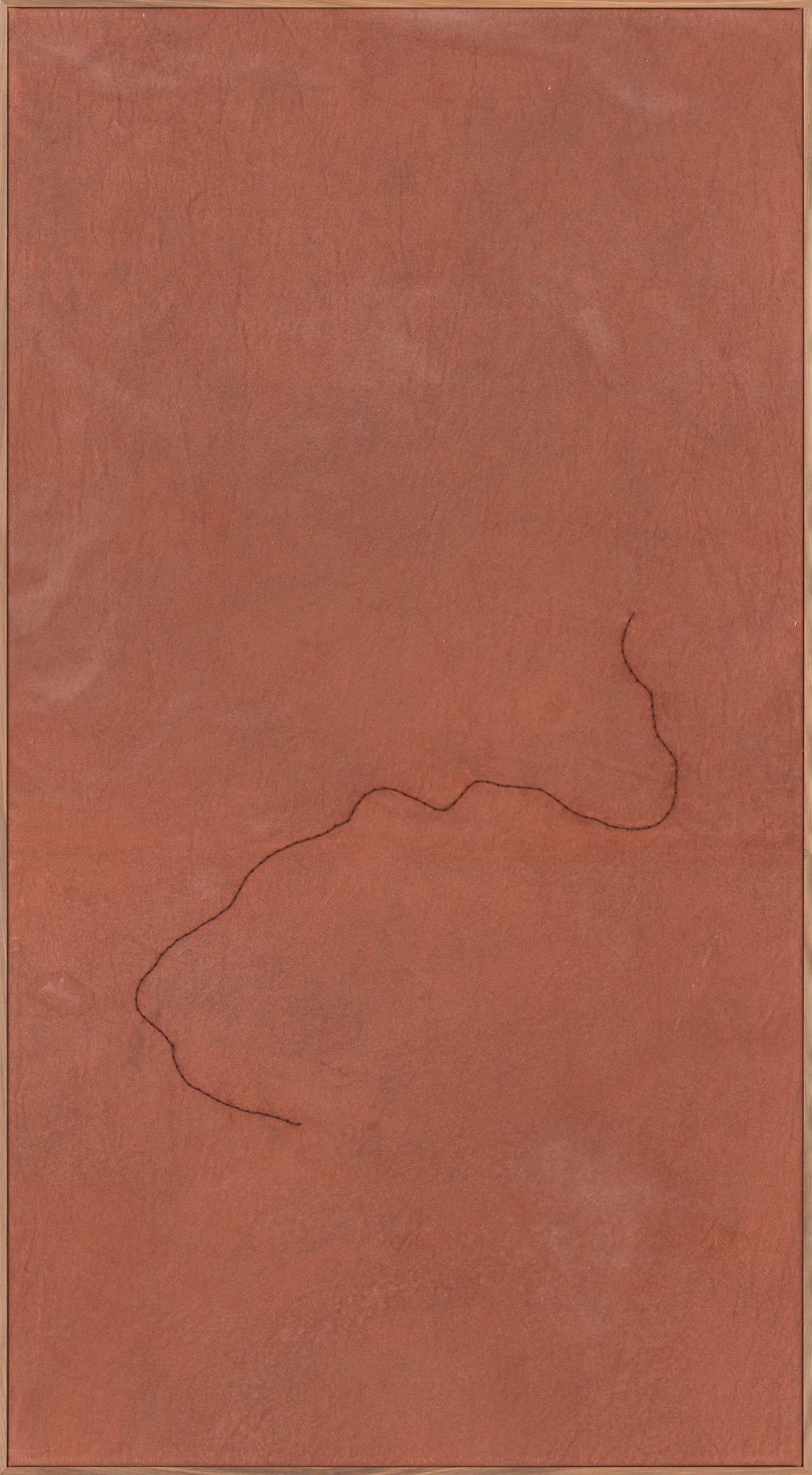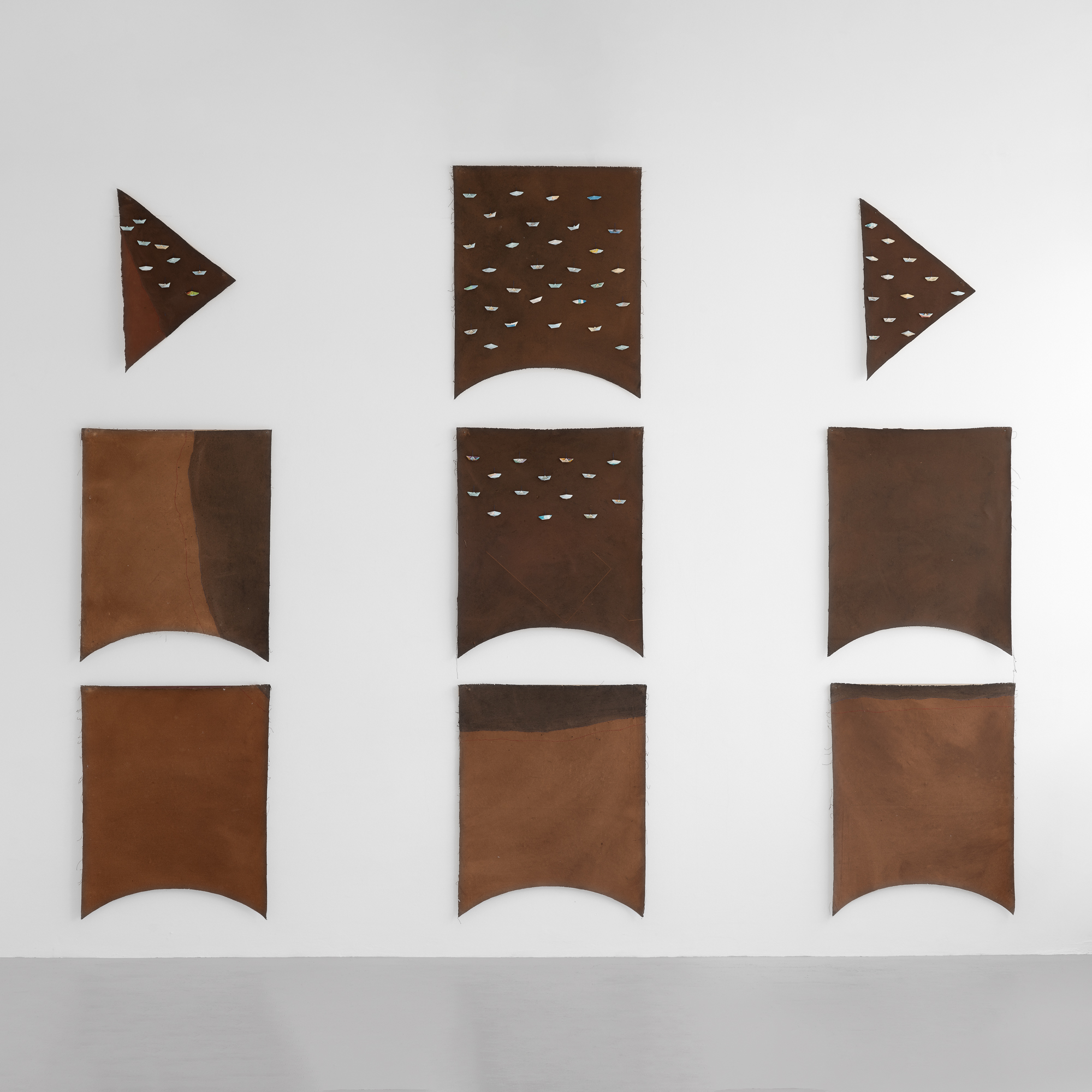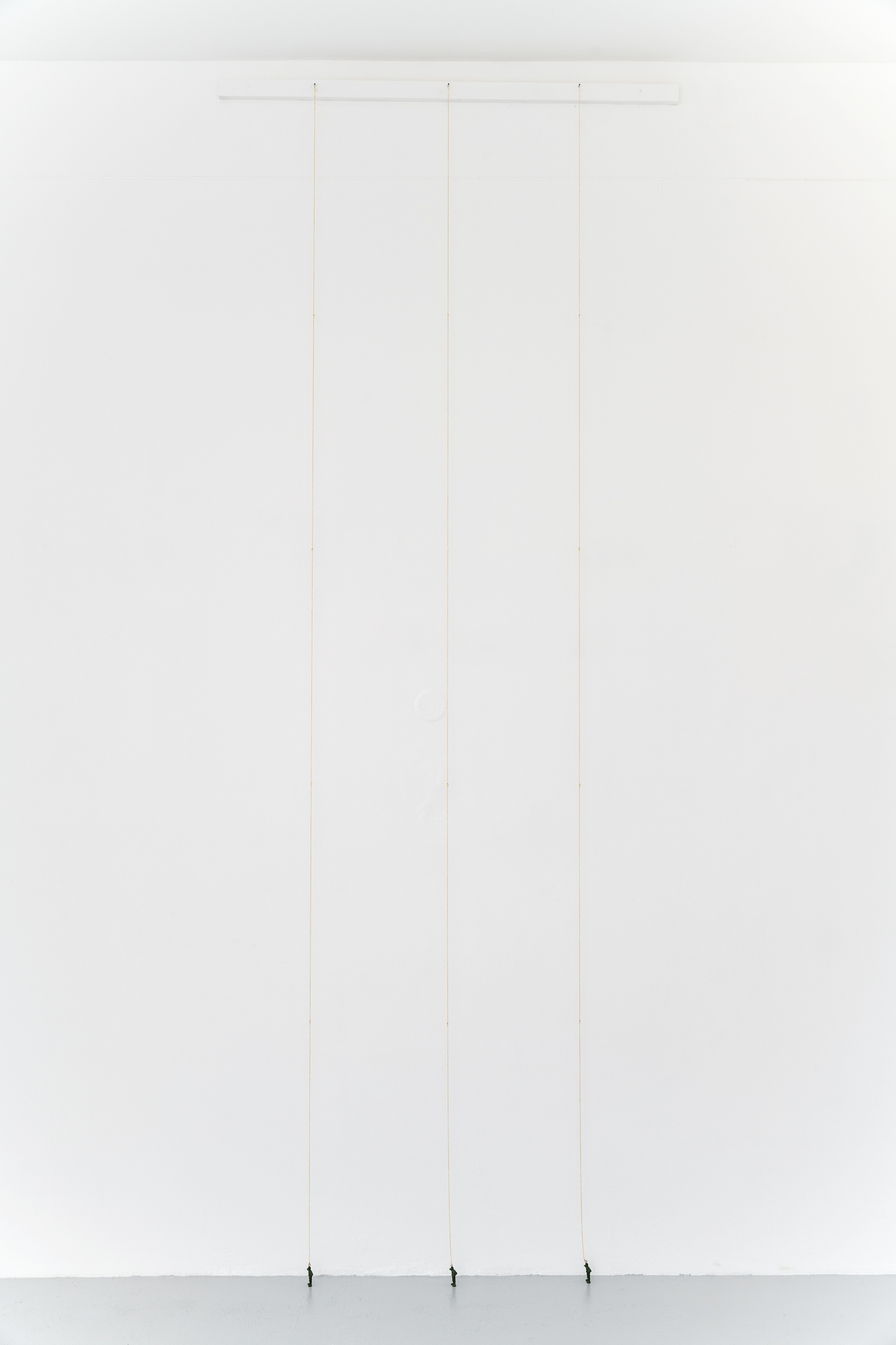Inga Somdyala
As Far As The Sea
05 August 2023
-
09 September 2023
Inga Somdyala: As Far As The Sea. RESERVOIR Projects. Photographer: Paris Brummer
‘As Far As The Sea’ is a new body of work by Inga Somdyala (b. 1994, Komani, South Africa) inspired by maps and a perspective from above. In the exhibition, the artist continues to explore his own personal history and experience as a way of reflecting on broader historical and collective narratives within Southern Africa.
While in residence with RESERVOIR Projects over a period of eight weeks, Somdyala strongly considered the location of the exhibition space in relation to the works he created and installed. Cornered on the 7th floor, the ocean is visible towards the North of the space, while the rest of the windows look out over the city bowl and Table Mountain to the South. Through intentional placement, Somdyala allows us to view the reclaimed Foreshore and Table Bay beyond, through an installation of three sails in a dead run, sewn in red umbhaco and anchored by cotton sash and offset weights. Behind you, an image of a red line vanishing into the bush connects the mountain to the shore. The image is printed onto fabric, and documents an intervention where the artist used a series of empty red umbhaco pillowcases to create a trail on the footpaths of the Gansbaai mountains at the Bodhi Khaya Residency near Stanford, South Africa, in October 2022. “Reflecting on the traditional rites of passage also referred to as ‘going to the mountain’, I wanted to engage my past experience as a young Xhosa initiate by recalling the red stripes of the Abakwetha blanket directly onto the landscape. I titled this gesture ‘The Righteous Path III’.” To Somdyala, the path has become symbolic of borders and thresholds, as well as the congenital line. Alongside ‘The Righteous Path III’ (2023), a series of oxide on canvas panels have been stitched with waxed thread, portraying sections of routes travelled and traced from the artist’s home in the Eastern Cape to Cape Town (where he lives and works), along the N1 and N2 by bus, as well as two old mountain passes, some of the first roads laid by early settlers to break into the South African interior. Looking at landscape as translated by maps has been another way to reflect on its present-day geographic make-up, its landmarks and place-names to trace my own history, home and my own sense of belonging here. Xhosa custom dictates that the initiate journey from the mountain to a nearby river or body of water, to wash off the white ochre characteristic of the seclusion period. This is the microcosmic scale of moving between mountain and water, the transition from one state into another. This is also to make reference to my own experience, of leaving home eCofimvaba soon after this transition to attend school in Cape Town. This is not a unique story. Ekhayeni: Rural-Urban Migration, Belonging and Landscapes of Home in South Africa (2019) shows that the path between rural eastern cape and Cape Town specifically has been well beaten by Xhosa people. Similarly, as my own experience is confirmed here, I am interested in what we lose or leave behind in that movement between, where home and labour are as far as the east is from the west. I’ve used ‘home-soil’, clay, natural oxides and ochres to talk about how cultural identity or progenitorial lines are embedded in that land where home is. For me, to journey ‘As Far As The Sea’ for school and work meant 12-hour bus trips, which prompted slow contemplations of the landscape. Now I’ve spent ten years in Cape Town, and have been reflecting on the legacy of rural-urban migration that persists in the black South African experience. I want to talk about this shift, this necessity to code switch language, culture and identity across landscapes.” Working with maps is also a way for the artist to understand the early impositions of settler-colonial culture in the Cape. In works such as ‘Terra Nullius’ (2023), Somdyala hand cuts the pages of the 1984 Readers Digest Atlas of Southern Africa, folding small sailing boats which amass over time and appear throughout his practice in different forms. He became interested in these particular maps while reading Noel Mostert’s Frontiers: The Creation of South Africa and the Tragedy of the Xhosa People. In this sweeping historical account of the violent hundred-year establishment of our present nation-state, the landscape was both theatre and dramatis personae. From the map, such rainbow nation sentiments as ‘Mother City’, ‘Wild Coast’ or ‘City of Gold’ both mark and mask the puncture points of an ongoing tragedy of landlessness. Drawn to this idea of ‘contact’ between two cultures, Somdyala also considers the necessary duality of the vanquished in order to move between dominant and non-dominant cultural spaces. ‘Lingua Franca’ (2023), an installation in nine parts resembling a mast and sails, continues Somdyala’s interest in flags as symbols while also mapping imagery of the old Table Bay coastline. The red and blue stitched lines represent the reclaimed coastline, and for the artist is another way of marking the cultural threshold, where land meets sea. “I want to address my own travelling between the Eastern and Western Cape in the last 10 years as symptomatic of this history of violent conquest and dispossession of an independent Xhosa society. I also want to extend the aforementioned Xhosa cultural custom of moving from mountain-initiation towards an ever receding body of water, arriving yet forced to go further; circling like seagulls above the Castle of Good Hope.” ‘As Far As The Sea’ engages themes of home and alienation, belonging and exile by reflecting on these microcosms of lived experience within the macrocosms of historical and cartographic perspective.

